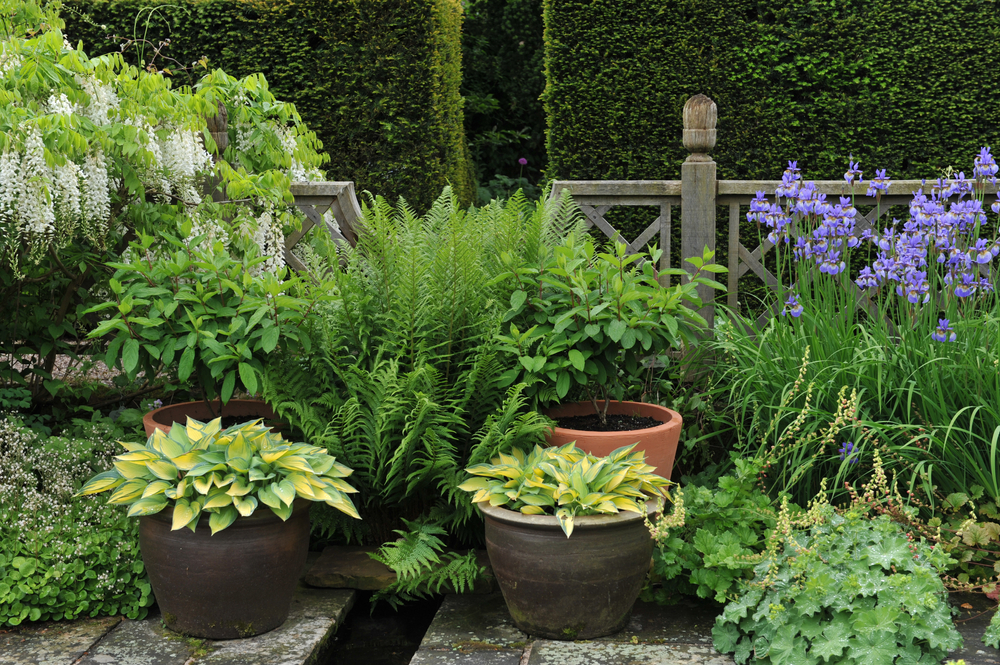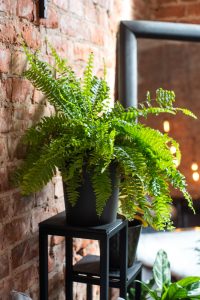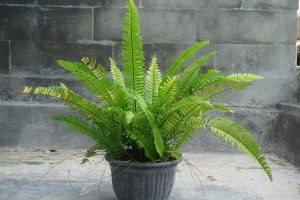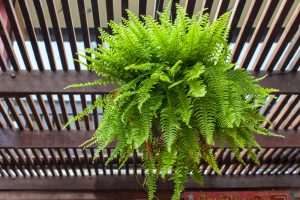
Ferns add exquisite beauty to a porch or garden that no other plant can. They are every gardener’s plant of choice when trying to create an eye-catching garden or porch. But without proper knowledge on how to care for outdoor ferns in pots, you may end up disappointed when they die or wilt.
To help make your journey to “plant” parenthood smoother, we have prepared a step-by-step guide.
Follow these instructions and your ferns will live on for a long time – maybe even forever. Who knows?
Guide On Caring For Potted Ferns
Ferns are simple plants that don’t create a lot of fuss. There are just a few things you need to look out for when caring for ferns. Let’s take a look at what those are:
Light
Ferns are a bit particular about how much light they receive. You have to ensure you place your outdoor fern in a spot where filtered light can reach it. If exposed to direct sunlight, the fern will come under stress. Place your fern in a position near trees because they will filter the sunlight; or if you don’t have a shaded location, you can keep your fern out in the sun for a few hours and then move it to a shaded area.
This will require a lot of commitment on your part though to move the fern around every day, so we don’t recommend it. Also, make sure not to place it in a completely shaded area where hardly any sunlight comes through because that will affect the growth of the fern too.

Fertilization
Fertilization is important for any plant because this is their food. And feeding ferns is key to their foliage growth. Make sure to use a fertilizer with high levels of nitrogen as nitrogen encourages foliage growth. It would help if you fertilized your fern once every month. Before fertilization, you need to water the soil well and use a water-soluble fertilizer to ensure even fertilization in the soil. Remember that ferns will burn easily with excessive fertilization, so make sure you use just half of the recommended dose of fertilizer.
Another school of thought regarding the fertilization of ferns is that if you’ve added good compost to the soil when planting, then they don’t need fertilization. You can observe your fern, and the foliage will talk to you.
Water
Potted ferns will dry out more quickly than ferns in the ground. And depending on the variety of fern you’ve planted, the watering requirements will be different. When buying your fern, you need to know the species and then find out what the watering requirements are. Generally, you need to ensure that the soil doesn’t completely dry out. You can check this by placing your finger on the soil and pressing gently; the top one inch of the soil should feel moist. If it feels dry, you need to water the plant.
Some varieties like the Boston Fern prefer the soil to be dry before they need water. So it’s very important to know the watering needs of your ferns.
Temperature And Humidity
Ferns thrive in a temperature range of 60 to 70 degrees Fahrenheit. Ensure the temperature in the location they are placed at is around this range for a healthy plant. When finding a location for a plant, try to find one that is humid. These are tropical plants where the environment is hot and humid, and that is what they need.
If you don’t have a humid environment, you can spray the plant once a week with water. Or use a humidifier to enhance the humidity around the plant. Another trick used by gardeners is to double-pot the plant. What you can do is place pea gravel in a pot slightly larger than the pot the fern is in. Pour water onto the gravel and get it moist, then place the second pot with the fern in the larger pot. The moist gravel will be sufficient to provide a humid environment.

Mulch
Adding mulch to your potted plant is a great way to keep the moisture in the soil intact. Depending on what’s easily available, you can use plastic mulch or organic mulch. Organic mulch can be wood chippings, shavings or straw. Try to get plastic mulch as they are disease-resistant, as opposed to organic mulch. Mulch will also help suppress the growth of weed. It also aids in keeping the soil temperature cool during a heatwave.
Pests
Ferns are trouble-free plants. And the same goes for their susceptibility to being attacked by pests. So you won’t have to worry too much about diseases or pests. One thing to look out for is slugs. They are the only fern enemy to need to keep an eye out for. The way to keep slugs out is by creating some kind of barrier around the fern. You can use eggshells to do this or any other method that you find suitable. The goal is to create a barrier that slugs can’t get past.
Now that you know how to care properly for your ferns. Let’s take a look at some of the common varieties of ferns that do well outdoors.
Common Varieties Of Ferns
Boston Fern: This is one of the most common ferns that people plant in hanging pots. They have drooping branches that hang beautifully out of a pot and look great on a porch.
Lady Fern: This is a great fern variety to pick, especially if you don’t have any shaded area, as they are very tolerant to sunlight as opposed to other fern varieties.
Maidenhair Fern: These beautiful ferns are very sensitive to sunlight. And should only be planted in an area with a good amount of shade or filtered light.

Final Thoughts
So there you have it. A simple guide on how to care for outdoor ferns in pots. Make sure to get a variety that suits your climate and understand the needs of the plant well before starting your journey with your ferns.
Frequently Asked Questions
Q: What do I need to do to keep my fern healthy?
A: There are a few things you need to do in order to keep your fern healthy. You need to water it regularly, make sure the soil is moist, and that the temperature is within the 60-70 degree range. You should also add mulch to the pot to help keep the soil moist and suppress weed growth. If you live in an area with high humidity, you don’t need to worry about spraying the plant with water. But if you don’t, using a humidifier can help create the right environment for your fern. And lastly, look out for slugs as they are the only pests that can harm a fern. You can do this by creating a barrier around the plant using eggshells or any other method you find suitable.
Q: What are some common varieties of outdoor ferns?
A: Some common varieties of outdoor ferns are the Boston Fern, Lady Fern, and Maidenhair Fern. Make sure to pick a variety that is suited for your climate and growing conditions. Each variety has different needs so it’s important to do your research before selecting a plant.
Q: Can I place my fern in direct sunlight?
A: Most ferns do better in shaded areas, as they are very sensitive to sunlight. There are a few varieties that can tolerate some sun exposure, but it’s best to avoid direct sunlight if you can. You can determine what level of sun exposure a fern can tolerate by checking the plant’s tag or doing some research online.






